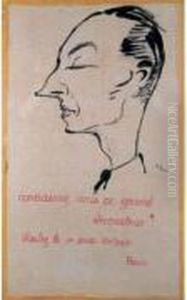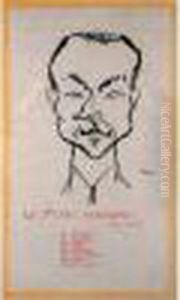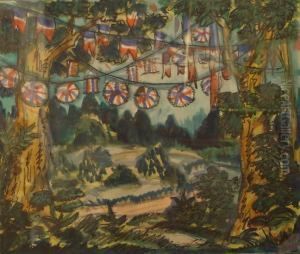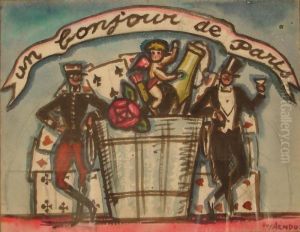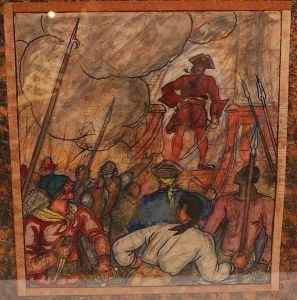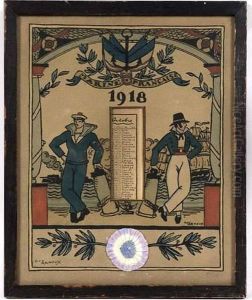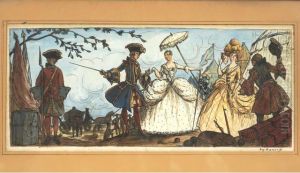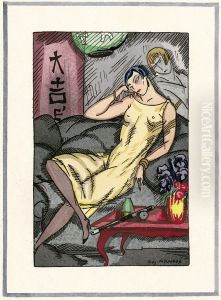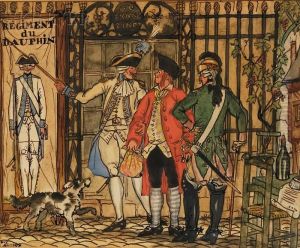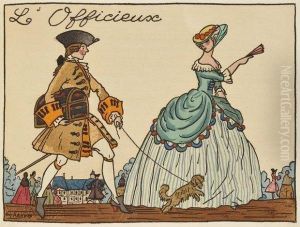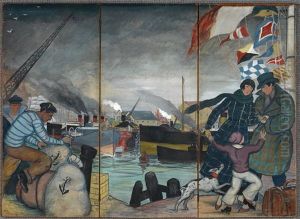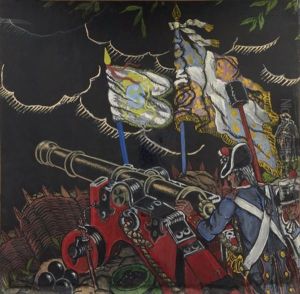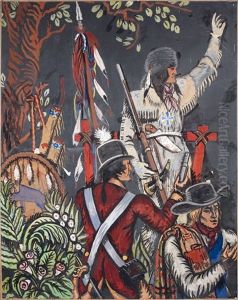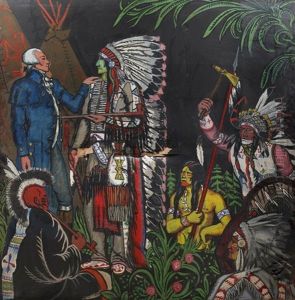Guy Arnoux Paintings
Guy Arnoux was a French illustrator, painter, and decorative artist known for his distinctive style and contributions to the world of graphic arts in the early 20th century. Born in 1886 in Paris, Arnoux was active during a vibrant period in French art, which saw the emergence of Art Nouveau and later Art Deco movements.
Arnoux began his artistic career as a student at the École des Beaux-Arts in Paris, where he honed his skills in drawing and painting. His early work was influenced by the Art Nouveau movement, characterized by elegant lines and ornamental details. Throughout his career, he illustrated numerous books, magazines, and advertising materials, which helped popularize his work and made him a prominent figure in French graphic arts.
During World War I, Arnoux contributed to the war effort by designing propaganda posters that were both patriotic and motivational. His posters were recognized for their bold use of color and dynamic compositions, effectively conveying messages of national pride and resilience.
In the 1920s and 1930s, as the Art Deco movement gained momentum, Arnoux adapted his style to fit the sleeker, more geometric aesthetic of the era. He produced works for luxury ocean liners, such as the famed SS Normandie, and his designs were featured in high-end fashion magazines, setting trends in the world of haute couture.
Arnoux's illustrations often depicted scenes of leisure and sophistication, reflecting the glamorous lifestyle associated with the Roaring Twenties and the interwar period. His work was not limited to paper; he also designed sets and costumes for the theater, contributing to the visual language of French performance art.
Despite the economic challenges of the Great Depression and the turmoil of World War II, Arnoux continued to work and remained a respected figure in the French artistic community until his death in 1951. His legacy lives on through his vivid illustrations and designs, which capture the spirit and elegance of early 20th-century French art and design.
